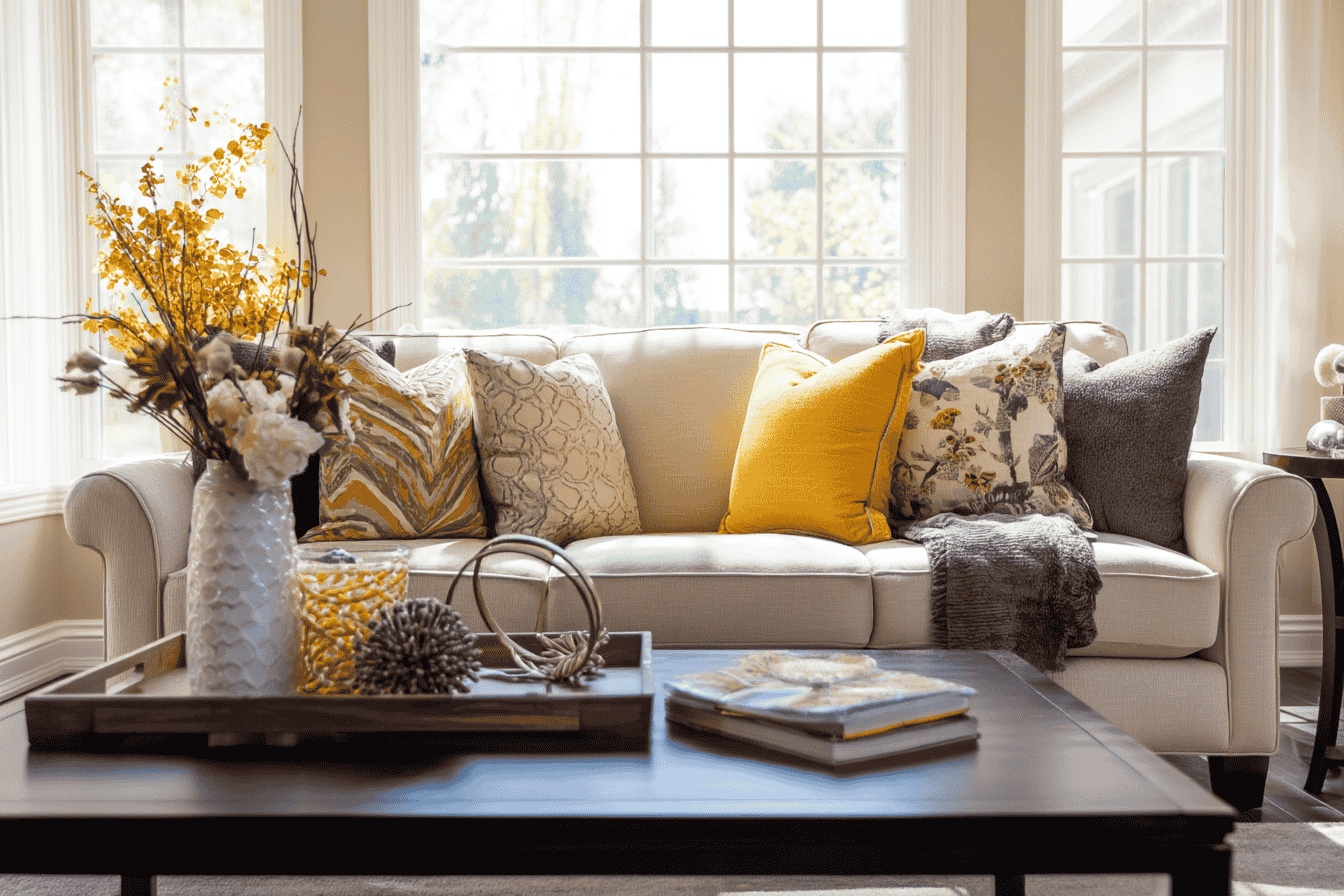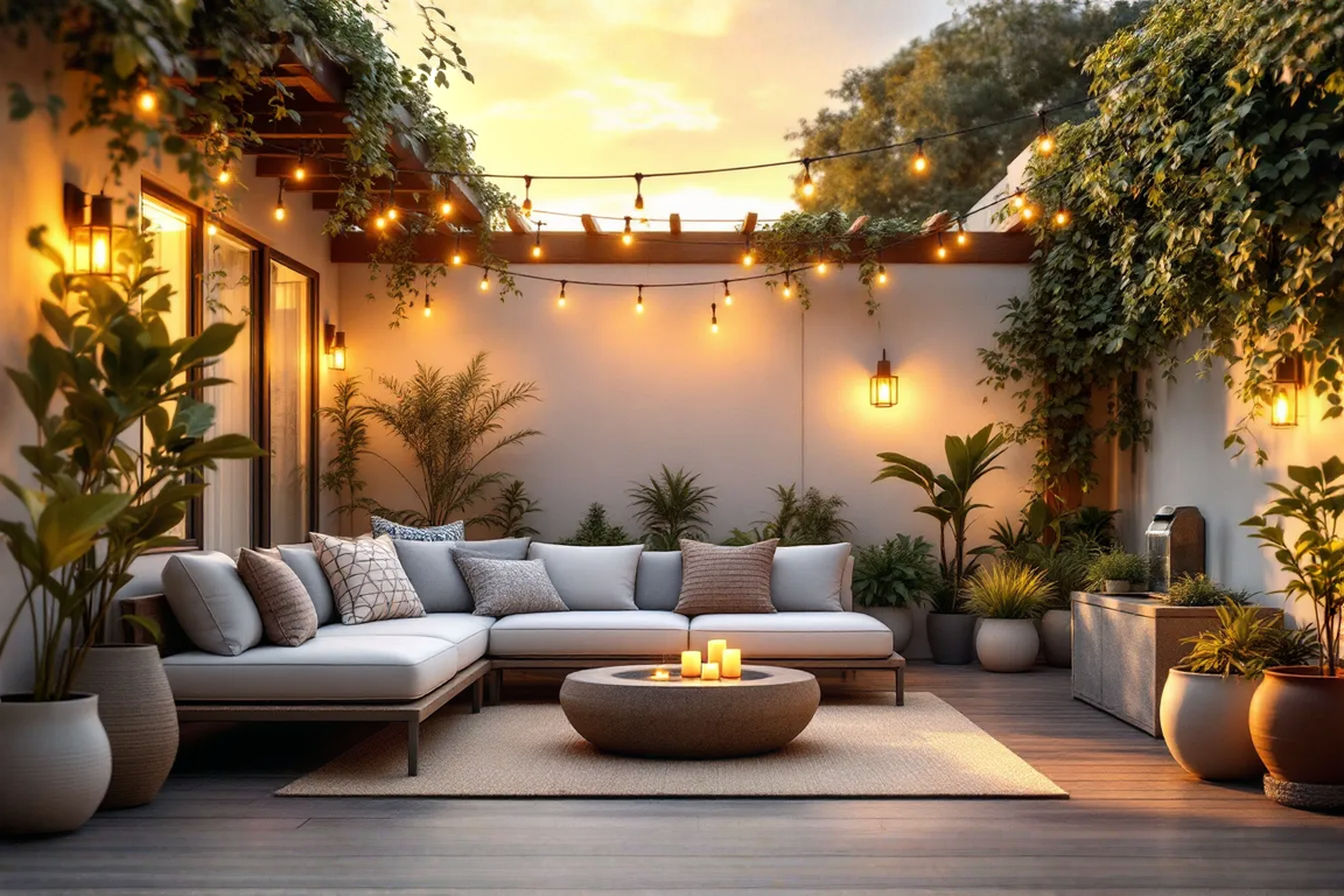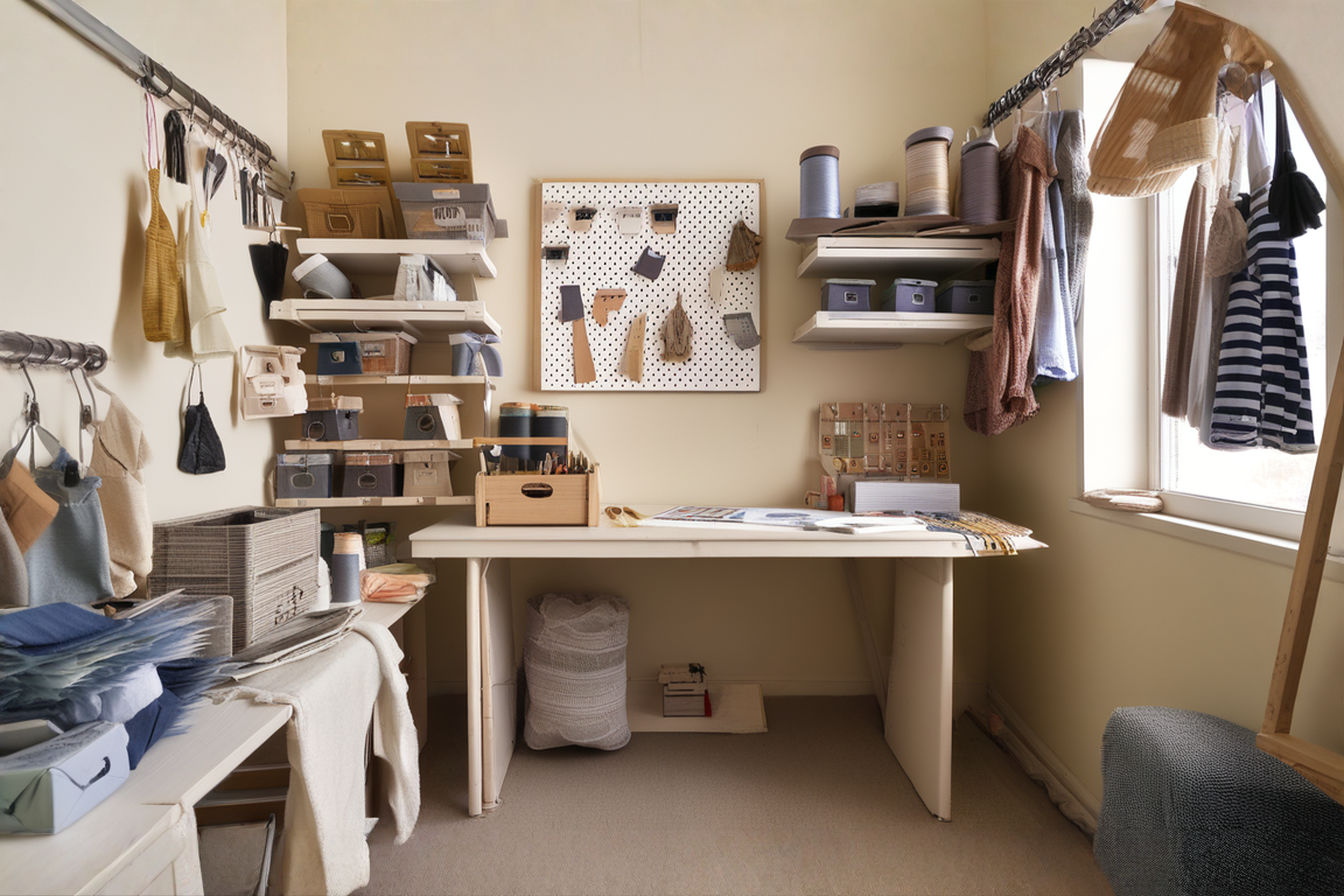This post may contain affiliate links. If you make a purchase through these links, we may earn a commission at no additional cost to you.
Transforming your living space doesn’t require emptying your wallet. While mainstream retailers offer convenient options, they often come with premium price tags that can quickly derail your decorating budget. The good news? A world of alternative, budget-friendly decor sources exists just beneath the surface, waiting for savvy homeowners to discover them. These hidden gems offer unique, characterful pieces that won’t just save you money—they’ll give your home personality and charm that mass-produced items simply can’t match.
This guide reveals eight unexpected treasure troves for affordable home decor that fly under most shoppers’ radar. From academic institutions to entertainment industry castoffs, these sources provide extraordinary opportunities to find distinctive pieces at remarkable prices. Get ready to transform your space while preserving your budget and expressing your personal style in ways you never imagined possible.
The Art of Budget Decorating
The pursuit of stylish, affordable decor involves more than simply saving money—it represents a creative approach to home styling that often yields more satisfying results than conventional shopping. When you hunt for budget-friendly pieces, you develop a sharper eye for design potential and quality craftsmanship rather than simply following trends.
Budget decorating encourages resourcefulness and imagination, forcing you to look beyond obvious choices and consider how unexpected items might enhance your space. This creative constraint often leads to more interesting, personalized environments than those assembled exclusively from catalog selections. Your home becomes a true reflection of your aesthetic sensibilities rather than a carbon copy of current design trends.
Finding affordable alternatives also connects you to the sustainability movement. By giving existing items new life, you reduce demand for resource-intensive manufacturing and keep perfectly usable goods out of landfills. This environmental benefit adds meaningful depth to your decorating journey, transforming it from mere consumption to conscious creation.
The satisfaction derived from discovering the perfect piece at an incredible price creates an emotional connection to your decor that store-bought items rarely inspire. Each bargain find becomes a story—a testament to your resourcefulness and design vision. These narratives infuse your home with authentic character while simultaneously stretching your decorating dollars further than you thought possible.
Estate Sales and Auctions: Treasure Hunting with History
Estate sales offer unprecedented access to curated collections of furniture, art, and accessories accumulated over decades. Unlike retail environments where everything matches current trends, these sales feature diverse items spanning multiple eras, often including vintage pieces with quality craftsmanship that exceeds modern mass-produced alternatives.
Finding local estate sales requires minimal effort but yields maximum reward. Websites like EstateSales.net and EstatesalesUSA.com maintain comprehensive calendars of upcoming events, while local newspaper listings and community bulletin boards frequently advertise sales. For optimal selection, arrive early on the first day; for the deepest discounts, return during final hours when sellers become increasingly motivated to clear remaining inventory.
Negotiation represents a standard practice at estate sales, with most prices carrying some flexibility. Begin by examining items thoroughly, noting any flaws that might justify lower offers. Bundle multiple purchases together to request package pricing, and maintain a respectful, friendly demeanor throughout discussions. Sellers appreciate buyers who clearly value their offerings, even while seeking reasonable discounts.
The digital realm has expanded estate sale access beyond local events. Online platforms like Everything But The House (EBTH) and AuctionNinja host virtual estate sales nationwide, allowing you to browse comprehensive household collections from anywhere. These services handle shipping logistics, connecting you with unique finds regardless of geographic limitations.
Focus your attention on quality vintage pieces with timeless appeal: mid-century modern furniture, antique mirrors with character-rich patinas, original artwork, distinctive lighting fixtures, and unusual decorative objects. These items inject authentic personality into contemporary spaces while often holding or increasing their value over time—making them not just decorative choices but potential investments.
Architectural Salvage Yards: History Reimagined
Architectural salvage yards preserve and sell elements rescued from historic buildings before demolition or renovation. These warehouses house extraordinary treasures: ornate mantels, vintage doors, antique hardware, stained glass panels, decorative ironwork, carved corbels, weathered barn wood, and countless other architectural fragments with immense decorative potential.
These salvaged elements offer unparalleled opportunities to incorporate authentic character into modern homes. A vintage door becomes a distinctive headboard, antique balusters transform into unique table legs, decorative iron grates convert to striking wall art, and weathered barn wood creates accent walls with impossible-to-replicate patina. The creative possibilities extend as far as your imagination allows.
Notable salvage operations like Architectural Artifacts in Chicago, Olde Good Things in New York, and ReStore locations nationwide maintain extensive inventories worth exploring. Regional operations often specialize in local architectural styles, providing pieces that connect specifically to your area’s design heritage.
When visiting salvage yards, dress appropriately for dusty, sometimes rough environments. Bring accurate measurements of your space, a tape measure, and photos of your project area. Approach shopping with flexibility and vision rather than rigid expectations, allowing yourself to discover unexpected treasures that might inspire entirely new design concepts.
First-time salvage shoppers should inspect items thoroughly before purchasing, checking structural integrity and understanding any restoration requirements. Start with smaller decorative elements before investing in major architectural pieces, and don’t hesitate to ask staff about an item’s history, condition, and potential applications. Their expertise often proves invaluable in identifying overlooked gems with tremendous design potential.
University Surplus Stores: Academic Aesthetics
Universities regularly update their furnishings, laboratory equipment, and institutional infrastructure, creating a steady stream of surplus items they sell to the public at deeply discounted prices. These sales represent a largely untapped resource for home decorators seeking unique, durable pieces with distinctive character and exceptional value.
University surplus stores typically stock an eclectic mix of furniture, lighting, decorative items, and unexpected treasures. Solid wood desks with mid-century lines, industrial-style laboratory stools, vintage classroom maps and charts, institutional lighting fixtures, and unique storage solutions frequently appear in these campus clearinghouses. The institutional quality means these items were built to withstand heavy use, making them excellent investments for home settings.
Accessing university surplus requires some research but delivers outstanding rewards. Most large public universities maintain surplus departments with regular sales hours or periodic public auctions. Search “[university name] surplus” to locate options in your area. Many institutions now list available items online, though in-person shopping often yields the best discoveries at the lowest prices.
The design potential of institutional pieces comes from their inherent authenticity. Laboratory cabinets create distinctive kitchen islands, drafting tables serve as spectacular desks, and vintage educational displays make conversation-starting wall art. Their utilitarian origins lend credibility to industrial and modern design schemes while providing unexpected focal points in traditional spaces.
Success stories abound from university surplus shoppers. One decorator furnished an entire home office with solid maple furniture from a university library renovation—spending less than $500 for pieces that would cost thousands new. Another found vintage botanical teaching charts that became striking wall art in a dining room, while a third discovered architectural models that now serve as sculptural coffee table centerpieces. These authentic pieces carry stories and character mass-produced decor simply cannot offer.
Film and Theater Set Sales: Dramatic Potential
When film productions wrap or theatrical runs conclude, set decorations and props often become available to the public through specialized sales. These events provide access to unique decor items designed by professional set decorators—often for a fraction of their original cost. The entertainment industry’s emphasis on visual impact and authentic atmosphere means these pieces often possess distinctive character rarely found in retail environments.
Finding production sales requires some insider knowledge or dedicated research. Production companies like Sony and Warner Brothers hold periodic public sales at their studio facilities, while smaller independent productions often advertise clearance events on social media or through local film commission websites. Theater companies typically announce set sales after major productions close, with university theater departments offering particularly accessible opportunities for the general public.
Set sales yield extraordinary finds across various decor categories. Distinctive furniture pieces chosen for their camera presence, unique lamps and lighting fixtures, decorative accessories with strong visual impact, unusual wall art created specifically for productions, and architectural elements like faux fireplace surrounds or decorative room dividers all regularly appear at these events. While some items may require minor modifications for practical home use, many arrive ready to enhance your living space immediately.
The key to successful set sale shopping involves seeing beyond an item’s original context. That ornate chair from a period drama might look entirely different—but equally compelling—paired with your contemporary sofa. The industrial lighting fixture from a gritty urban film set could become the perfect statement piece for your dining room. These contextual transformations allow you to incorporate truly distinctive elements into your existing decor scheme.
Online resources have expanded access to entertainment industry decor beyond traditional studio sales. Websites like MovieProps.com aggregate items from various productions, while many set decorators now maintain Instagram accounts showcasing available pieces after productions conclude. These digital channels connect decor enthusiasts nationwide with unique items that previously remained within the entertainment industry’s closed ecosystem.
Hotel Liquidation Sales: Luxury for Less
Hotels regularly renovate to maintain competitive appearances, creating a continuous stream of high-quality furnishings entering the liquidation market. These renovation cycles occur regardless of the furniture’s actual condition, meaning relatively new, lightly-used pieces become available at dramatic discounts from their original cost. For budget-conscious decorators, these sales represent opportunities to acquire well-made items at a fraction of retail prices.
Hotel liquidation events happen through specialized liquidation companies that purchase entire hotel inventories during renovations. Firms like Hotel Furniture Liquidators, Liquidation World, and NCL Auctions maintain warehouses across the country and often list available inventories online. Additionally, hotels sometimes conduct direct sales through local advertising when preparing for renovations, particularly in non-chain properties with unique furnishings.
The quality considerations for hotel furniture differ significantly from typical residential pieces. Hotels invest in contract-grade furnishings designed to withstand continuous use while maintaining their appearance—a durability standard exceeding most retail furniture. While styles may sometimes skew toward neutral territory, the construction quality typically surpasses comparably priced retail options. Higher-end hotels often feature custom designs and premium materials that would command extraordinary prices in conventional retail channels.
Certain hotel items consistently represent exceptional values for home decorators. Headboards and mirrors frequently offer dramatic design impact at modest prices, while nightstands, desks, and occasional tables provide practical storage with commercial-grade construction. Decorative lighting, particularly table lamps, often features distinctive designs that would cost significantly more through traditional retail outlets. Artwork, while sometimes generic in budget properties, can include striking large-scale pieces in higher-end hotel liquidations—often priced based on frame size rather than artistic merit.
Transforming hotel items for residential use sometimes requires creative vision, but simple modifications yield impressive results. Reupholstering standard hotel desk chairs with distinctive fabrics creates custom seating at a fraction of normal cost. Repainting neutral case goods in bold colors transforms their personality completely. Even simple hardware changes on dressers and nightstands can elevate basic pieces into custom-looking furnishings that perfectly complement your existing decor.
Import Overstock Warehouses: Global Style on a Local Budget
Import overstock warehouses accumulate excess merchandise when retailers overorder or reject shipments due to minor issues like delayed delivery or slight specification deviations. These facilities sell directly to the public at wholesale prices or below, offering exceptional values on unique items from around the world. For decorators seeking distinctive pieces with international flair, these warehouses provide access to goods that would otherwise command premium prices in boutique settings.
Finding import warehouses requires persistence but rewards the effort. Industrial areas near major ports and shipping hubs often house these operations, though they rarely advertise extensively. Search business directories for terms like “import liquidation,” “wholesale home decor,” or “furniture warehouse,” focusing on commercial districts. Follow wholesale-to-public accounts on Instagram and Facebook, where many operations post new arrivals and special sales. Relationships with interior designers can also yield introductions to these semi-hidden resources.
Import warehouses typically stock an eclectic range of items reflecting global design influences. Hand-carved wooden accessories from Southeast Asia, distinctive ceramics from Mexico and Portugal, textiles from India and Turkey, unique lighting fixtures from Morocco, and furniture featuring traditional craftsmanship from various regions all commonly appear in these settings. The merchandise changes constantly based on available shipments, creating a treasure-hunt atmosphere that rewards frequent visits.
Negotiation remains standard practice in most import warehouses, with pricing flexibility increasing for multiple purchases or items that have remained in inventory longer. Developing relationships with warehouse managers can lead to notifications about new shipments aligned with your aesthetic preferences, while end-of-season clearances often feature additional discounts as businesses make room for incoming merchandise.
The optimal shopping times for import warehouses align with retail buying cycles. January and July typically bring extensive new inventory as retailers place orders for upcoming seasons, while pre-holiday periods (late October and early November) often feature clearance pricing on summer items. Shopping on weekdays rather than weekends generally provides more attentive service and greater negotiation opportunities, allowing you to maximize the value these unique resources offer.
Artist Studio Clearance Events: Original Art on a Budget
Artists regularly clear their studios of older works, experimental pieces, and production overruns to make space for new creative directions. These clearance events provide extraordinary opportunities to acquire original artwork at prices significantly below gallery rates—often for pieces that simply haven’t found the right audience rather than works with inherent flaws. For budget-conscious decorators, these events transform original art from luxury splurge to accessible design element.
Finding studio clearance events requires connecting with the local arts community. Follow regional artists on social media platforms, particularly Instagram, where many announce studio sales directly to followers. Subscribe to newsletters from local arts organizations, co-op galleries, and university art departments that frequently publicize member sales. Annual events like city-wide studio tours and art walks often coincide with clearance opportunities as artists prepare to showcase new work by clearing existing inventory.
These events yield diverse artistic treasures spanning various media and styles. Original paintings, prints, and photographs become available at substantial discounts, while ceramic pieces, textile art, and small sculptures offer three-dimensional options for your decor. Experimental works and studies—pieces artists create while developing techniques or exploring new directions—often sell at particularly accessible price points while providing authentic creative expression for your space.
Beyond purchasing existing works, artist relationships cultivated through these events can lead to affordable commissioned pieces tailored specifically to your space and preferences. Many emerging artists offer commission rates substantially below established gallery artists, particularly during slower creative periods or when the project aligns with their current artistic interests. These custom creations provide truly unique decorative elements that perfectly complement your home while supporting working artists directly.
Building relationships with local artists yields benefits extending beyond individual purchases. Artists frequently trade works with colleagues working in different media, giving them access to pieces they might sell at favorable prices to collectors they know and trust. They also maintain connections with the broader creative community, potentially directing you toward other resources for unique, affordable decor. These relationships enrich both your home environment and your connection to the local cultural landscape.
Online Marketplace Hidden Gems: Digital Treasure Hunting
While mainstream online marketplaces dominate the digital landscape, specialized platforms targeting niche decorating interests often provide superior value and more distinctive options. These focused marketplaces connect you directly with artisans, collectors, and small businesses offering unique items that rarely appear in conventional retail channels or general e-commerce sites.
Beyond obvious platforms like Etsy, Facebook Marketplace, and eBay, specialized marketplaces deserve exploration. Chairish focuses on vintage and pre-owned designer pieces with curated collections and negotiable pricing. AptDeco serves urban areas with delivery services for secondhand furniture from quality brands. EBTH (Everything But The House) operates curated estate sale auctions online with extraordinary finds starting at just one dollar. Ruby Lane specializes in antiques and collectibles with rigorous dealer standards ensuring authenticity and quality.
Finding exceptional deals online requires strategic approaches rather than casual browsing. Search using specific designer names rather than general terms to uncover underpriced items from sellers unfamiliar with their value. Explore listings with poor or limited photographs that deter other buyers despite describing desirable items. Set alerts for specific items rather than conducting repetitive searches, allowing technology to monitor listings continuously. Shop geographic regions with lower demand for particular styles—mid-century modern pieces often sell for less in traditional areas, while ornate traditional furniture frequently costs less in design-forward urban centers.
Shipping considerations significantly impact the value equation for online purchases. Factor delivery costs into your budgeting from the outset, focusing on items where the combined price and shipping still represent significant savings. Consider lightweight, disassemblable options when shipping costs are calculated by weight and dimension. For larger pieces, explore specialized furniture shipping services like uShip that connect you with transporters already traveling between locations, often at substantial discounts compared to dedicated delivery services.
Targeted search strategies dramatically improve online marketplace results. Use specific terminology from the design world rather than general descriptions—”Parsons table” rather than “rectangular table” or “slipper chair” instead of “small armless chair.” Include materials in search terms to find higher-quality options—”brass lamp” rather than simply “lamp.” Exclude mass-market retailers in searches using negative keywords to filter out new retail items. These focused approaches connect you with sellers offering distinctive pieces rather than commodity items available everywhere.
Conclusion: The Thrill of the Affordable Find
The eight unconventional decor sources explored in this guide open doors to distinctive, affordable styling options that transform budget constraints from limitations into creative opportunities. By expanding your decorating horizons beyond traditional retail environments, you access unique pieces with authentic character while maintaining financial responsibility—the perfect combination for creating truly personal living spaces.
Each alternative source offers its own rewards and challenges. Estate sales provide glimpses into curated collections built over lifetimes. Architectural salvage yards preserve historical elements with irreplaceable patina and craftsmanship. University surplus stores offer institutional-quality pieces with unexpected applications in residential settings. Film set sales deliver professionally selected items chosen for their visual impact. Hotel liquidations make luxury-grade furnishings accessible at fractional costs. Import warehouses bring global design influences within reach. Artist studio sales connect you directly with original creative works. Specialized online marketplaces extend your hunting grounds beyond geographic limitations.
The most successful budget decorators approach these resources with flexible vision rather than rigid shopping lists. They recognize potential in unexpected places, seeing beyond an item’s original purpose to its possibilities within their homes. This adaptable perspective transforms constraints into creative fuel, producing environments with genuine character that catalog-perfect rooms often lack.
Beyond financial benefits, these alternative sources connect you with communities sharing your interest in distinctive environments. Fellow estate sale enthusiasts swap information about upcoming events. Architectural salvage devotees share restoration techniques. Artist relationships blossom into cultural connections. These communal aspects enrich your decorating journey beyond the mere acquisition of objects.
What unexpected decor source will you explore first? What overlooked treasures await your discovery? The adventure begins where conventional shopping ends—in the creative pursuit of style without financial sacrifice. Your uniquely beautiful, budget-friendly home is waiting to emerge one distinctive find at a time.






